Embed presentation
Download as PDF, PPTX
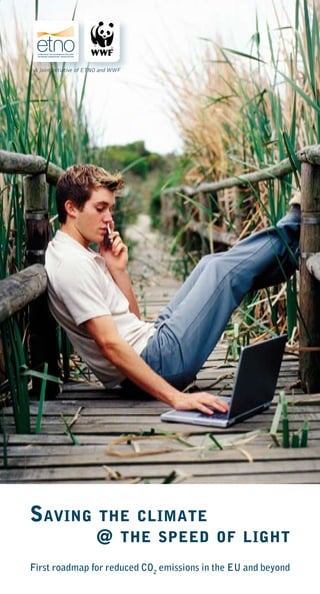
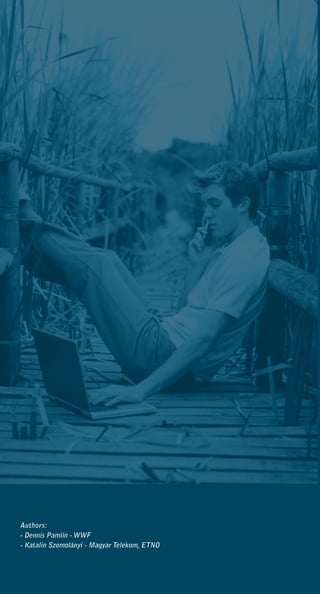


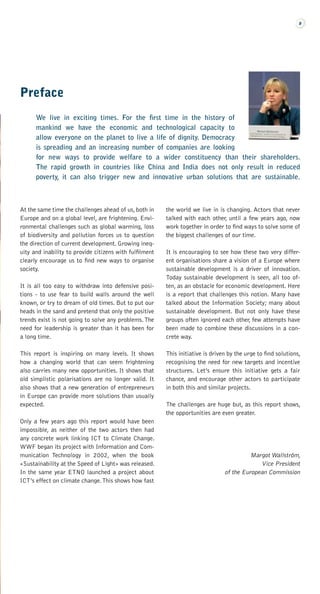







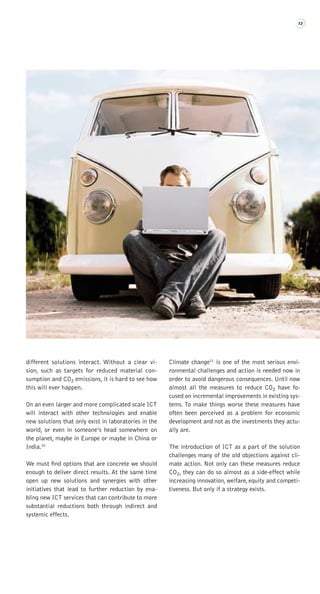

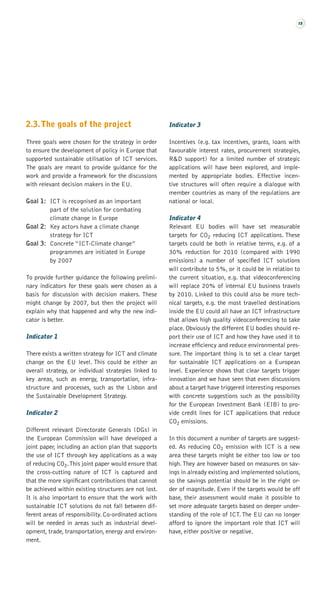
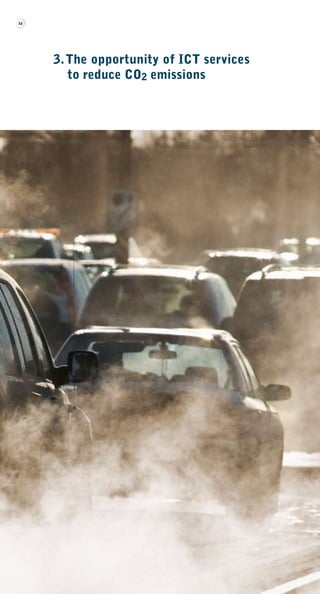
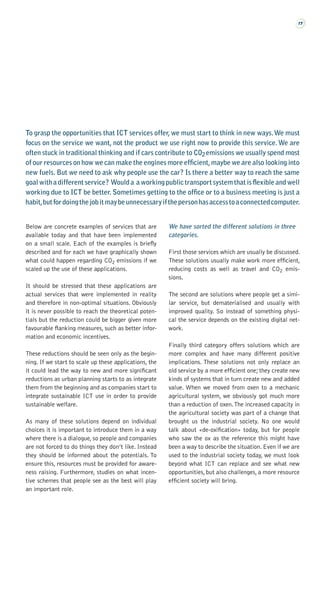


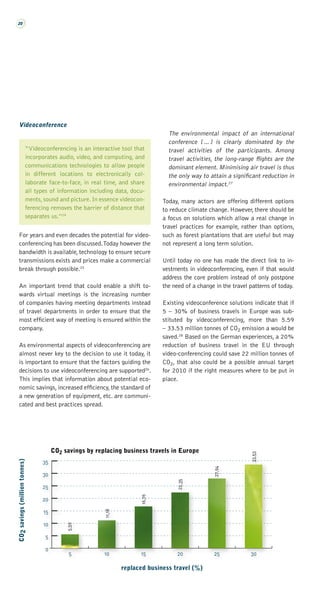




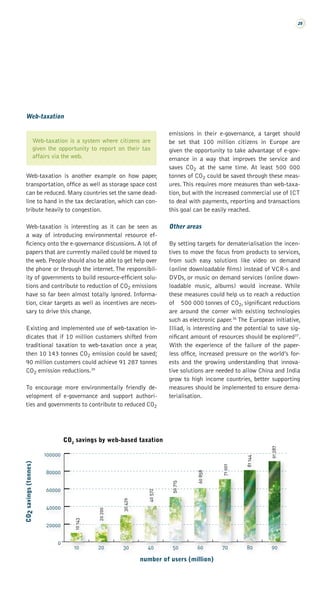







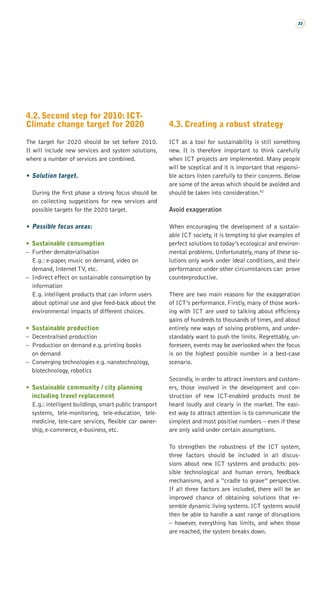




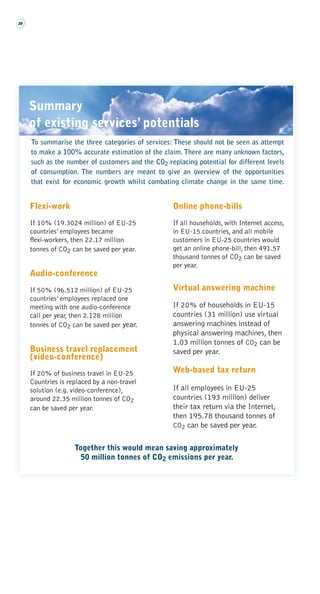



This document presents a joint initiative between the European Telecommunications Network Operators' Association (ETNO) and the World Wildlife Fund (WWF) to create a roadmap for reducing CO2 emissions in the EU and beyond using information and communication technologies. The roadmap proposes strategies for deploying ICT services to replace travel, enable de-materialization, support sustainable community planning, and aims to reduce CO2 emissions by 50 million tonnes per year by 2010.







































